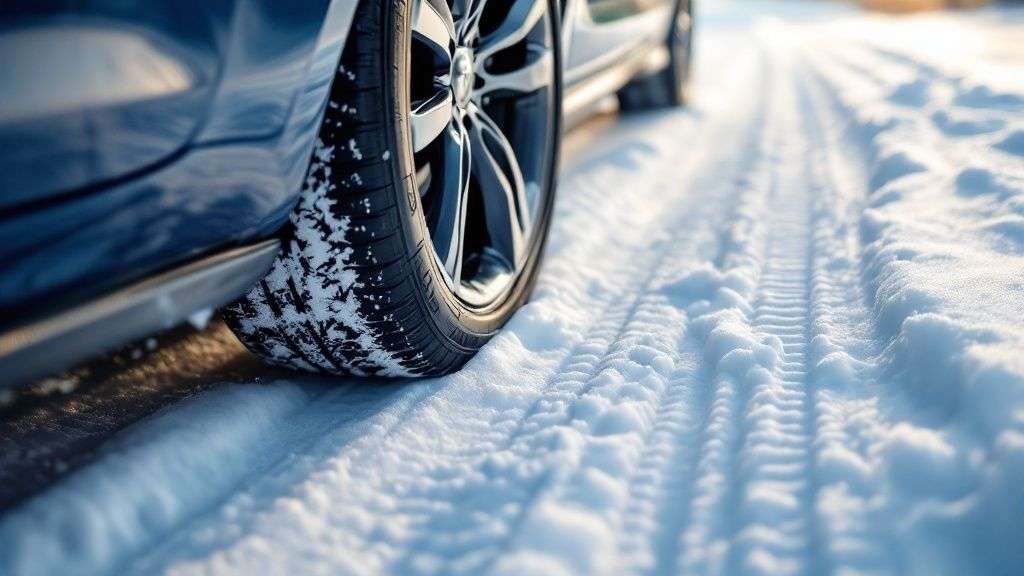How to Check Drive Weather Conditions for Utah's Canyons
A simple guide for canyon travelers on what to check, when to check it, and how to read live data for a safe drive in any weather.
Checking drive weather conditions is the single most important safety check for anyone heading into Utah's canyons. This guide explains what to look for beyond a simple forecast, how to interpret live UDOT data, and when to make the critical call to stay home. Following these steps will help you avoid getting stuck and ensure a safe trip.
What Drive Weather Conditions to Check
Before you even grab your keys, you need a clear picture of the road ahead. A sunny sky in the valley means very little about what's happening thousands of feet up in Little Cottonwood Canyon or Big Cottonwood Canyon. These canyons create their own microclimates, turning clear roads into whiteouts in just a few miles.

Here are the three most important things to check:
- Current and Upcoming Precipitation: Is it snowing in the canyon right now? Our live data on the Wasatch Roads homepage shows you real-time snowfall intensity. A storm expected at 3 p.m. can make your drive home treacherous, even if the morning drive up was clear.
- Live Road Conditions: What is the road surface actually like? Official sources like UDOT Traffic will report if the road is wet, slushy, or has patches of ice. This is ground truth, not a guess.
- Active Alerts and Restrictions: Are there any official warnings out? Always look for Traction Law announcements or road closure alerts for Little Cottonwood Canyon or Big Cottonwood Canyon. These are your clearest signals that conditions are already hazardous.
A five-minute check can save you hours of being stuck in gridlock—or worse, prevent a dangerous slide-off.
How to Check Drive Weather Conditions
Official alerts can sound like a foreign language, but knowing what they mean is your key to safely getting up the canyons. When you see terms like "Traction Law" or "Road Closed for Avalanche Control," you need to know exactly what to do.
Understanding Traction Laws and Chain Requirements
When you see a “Traction Law in Effect” alert, it's a legal requirement, not a suggestion. Conditions are hazardous enough that officials are mandating specific equipment to keep cars from spinning out.
- 4WD/AWD Vehicles: Your tires must have either a M+S (mud and snow) or a 3-Peak Mountain Snowflake (3PMSF) rating.
- 2WD Vehicles: You must have M+S or 3PMSF-rated tires plus have chains properly installed on your drive wheels.
A 4WD vehicle with bald all-season tires is often more dangerous than a 2WD with proper equipment. You can check the current Traction Law status for both canyons on our live data dashboards.
Using Live Data To See What’s Happening
The UDOT Traffic app and website are your best friends. The traffic map gives you a live look at current conditions, active alerts, and traffic flow.

This visual shows you exactly where traffic is stopped, where accidents have occurred, and what restrictions are in place. Pay close attention to how they describe the road surface—words like "slush," "ice-covered," or "snow-packed" mean very different things for your driving. "Slush" might just be messy, but "ice-covered" demands your full attention and a much slower speed.
When to Cancel Your Canyon Trip
The smartest—and sometimes bravest—call you can make is deciding to stay home. Learning to recognize the red flags for dangerous drive weather conditions is a skill that will keep you safe for many seasons to come.

If UDOT issues an official "no unnecessary travel" recommendation, that’s your non-negotiable cue. This isn't a friendly suggestion; it's a direct warning that conditions are either extremely hazardous or deteriorating fast. A Winter Storm Warning is another major red flag, signaling heavy snow and high winds that will make travel difficult, if not impossible.
One of the biggest mistakes people make is only thinking about the drive up. A few flurries at 9 a.m. can easily become a blizzard by 3 p.m. The drive down—with gravity working against you on icy roads—is often far more dangerous. Always check the full day's forecast before you commit.
Actionable Tips for Safe Canyon Driving
- Prep Your Vehicle: Ensure your tires have a 3-Peak Mountain Snowflake (3PMSF) or M+S rating with good tread. Fill up your washer fluid with a de-icing formula and have your battery tested for cold weather performance. For a full checklist, see our Little Cottonwood Canyon winter driving guide.
- Pack an Emergency Kit: A road closure can last for hours. Pack a warm blanket, extra layers, water, snacks, and a portable phone charger. A small shovel and sand/cat litter for traction can be lifesavers.
- Drive Smoothly: On snowy or icy roads, every input—steering, braking, accelerating—needs to be gentle. Double or triple your normal following distance to at least 5-6 seconds.
- Use Engine Braking Downhill: Instead of riding your brakes, downshift to a lower gear to let the engine control your speed. This prevents your brakes from overheating and gives you more control.

Frequently Asked Questions
Where is the best place for real-time road closure information?
The official source of truth is the Utah Department of Transportation (UDOT). The two most reliable places for live updates are the UDOT Traffic app and the UDOT Traffic website. For up-to-the-second alerts directly from canyon crews, follow @UDOTcottonwoods on X (formerly Twitter).
What should I do first if I'm stuck in a road closure?
Stay in your vehicle, as it's your safest shelter. The first and most critical step is to check your tailpipe and ensure it's completely clear of snow. A blocked exhaust can quickly fill your car with deadly carbon monoxide. After that, run your engine sparingly to conserve fuel, stay warm with your emergency blankets, and keep your phone charged.
For a single dashboard that pulls all this critical data—canyon traffic, weather, road status—into one place, make Wasatch Travel Helper your first stop before every trip.